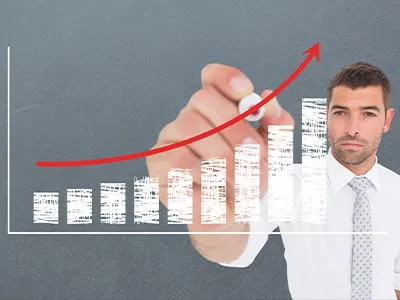When starting a company, it is tempting to get customers regardless of the effort, time, and cost. However, if you plan on running a profitable business, knowing customer acquisition cost is of the utmost importance.
The golden rule is to balance the total cost of your sales and marketing efforts you invested in acquiring a customer or your customer acquisition cost. Whether it is a service promotion via digital marketing services, paid ads, or you wish to market your affiliate program, the rule stays the same.
If you are curious about your customer acquisition cost, this blog is for you. You will learn what customer acquisition cost is, how to calculate it, and everything in between.
Customer Acquisition Cost (CAC) represents the expenses associated with gaining a new customer. Essentially, CAC encompasses the resources and expenditures involved in securing an additional customer. It serves as a vital business metric frequently employed in conjunction with the customer lifetime value (LTV) metric to assess the value generated by acquiring a new customer.
When your inbound marketing program such as SEO services and search engine marketing services is effectively running, there’s less need to allocate extensive resources to paid advertising to generate both high- and low-quality leads. This is because your blog content continuously attracts high-quality organic leads around the clock.
Let us suppose your sales team consistently prospected and cultivated a robust pipeline. Despite the temptation to expand the team, there’s no urgency to hastily recruit more representatives to meet quarterly quotas. The current sales team possesses sufficient capacity to manage the existing number of leads in the pipeline and successfully close those deals.


Your company’s customer services team plays a crucial role in preserving and nurturing relationships with satisfied customers.
This allows you to gain new customers through activities such as crafting testimonials, providing reviews, serving as case studies, and recommending your business to friends and family. Moreover, if leads originating from these sources convert into customers, you acquire them without incurring any additional costs, further lowering your customer acquisition cost (CAC).
Reducing CAC signifies enhanced cost efficiency in your business expenditures, likely leading to increased returns.


CAC is a key metric that most businesses and investors are interested in. In fact, many businesses succeed because they fully understand their customer acquisition cost. Here are the two most important reasons why you must know the customer acquisition cost for your business
1. Improves Your Profit Margins
Understanding your Customer Acquisition Cost (CAC) enables you to thoroughly assess your customer’s value and enhances profit margins.
For example, your business values each customer at $99. In this context, the choice of which channel to use becomes crucial. Without an understanding of CAC, your business might inadvertently impact profitability by choosing social events as a marketing channel.
Conversely, channels like social media marketing services in the USA and posters would contribute to improved profitability, given that their CAC is lower than the value per customer.



2. Improves Your ROI
knowing expense associated with acquiring new customers for your business is pivotal in evaluating marketing return on investment. For example, if your company employs various channels for customer acquisition. In this case, knowing your Customer Acquisition Cost (CAC) helps you identify the marketing cost per customer and the most cost-effective method for acquiring customers.

When your business uses customers to spread the word about your products, it reduces your customer acquisition cost. Let us suppose your company creates websites for its clients. You create beautiful website designs that lots of people like and put your website address on them so that potential customers may contact you.
As more people visit websites created by your company, it leads to more sales. This is because as more people find out about your web development services, the cost of getting new customers goes down.
If you want to know your business’s average cost of customer acquisition, follow these three steps.

First, you must choose a specific time period for which you wish to calculate the customer acquisition cost. This includes determining the date, month, quarter or year. The more precise you are about the time frame, the more accurate the marketing cost per customer you will figure out.

In the second step, you must use the formula for CAC to find out how much does it cost you to acquire a new customer each time.
Add up all the money you spend on marketing and sales. Then, divide that total by the number of new customers you got during that time. The answer will give you an estimate of the cost of acquiring each new customer for your company.



After determining the Customer Acquisition Cost (CAC) for your company, you can analyze this figure in comparison to other essential business metrics. This comparison will reveal valuable insights into the effectiveness of your marketing, sales, and customer service initiatives.

The formula to calculate your customer acquisition cost is quite simple.
| Customer Acquisition Cost = | Your Sales and Marketing Expenses Number of New Customers Your Business Acquired |
The formula to calculate your customer acquisition cost is quite simple.
| Customer Acquisition Cost= | Your Sales and Marketing Expenses Number of New Customers Your Business Acquired |
Your sales and marketing expenses encompass various costs incurred during a specific measurement period.
This includes expenditures on advertising and marketing, commissions, bonuses paid to your employees, and salaries of your marketers and sales managers. It also includes other overhead costs associated with sales and marketing activities.
The “number of new customers” refers to the total number of customers acquired during the same measurement period. It is a straightforward metric for quantifying the volume of new customers gained over a specified timeframe.


Applying the Customer Acquisition Cost Formula: An Example
Imagine your company spends $500,000 on sales and $300,000 on marketing. Now, let’s say your company got 800 new customers in the last three months. To figure out how much it costs to get each new customer, you add the money spent on sales and marketing together (which is $500,000 + $300,000) and then divide that total by the number of new customers (800).
Therefore, the cost to acquire each customer for that quarter would be $1,000. This means, on average, your company spent $1,000 to bring in each of the 800 new customers during that time. This calculation helps you understand how efficiently your money is being used to get new customers and can give insights into the effectiveness of your sales and marketing efforts.
Types of Costs to Include in a CAC Formula
If you want to be certain about your customer acquisition cost, consider the following expenses for this metric.
Ad Spend
Ad spending refers to the funds you allocate for advertisements and marketing. Advertising is an effective means of attracting new customers. Therefore, to guarantee the success of ad campaigns, you must connect with the right target audience.

If you are unsure about the effectiveness of a marketing campaign, you must assess its value by dividing the revenue generated from the advertisement by the amount of money spent on that specific campaign.
This calculation helps you gauge whether your investment in the campaign is providing a favorable return. Furthermore, it allows you to make informed decisions about the efficiency of your advertising strategies.


Employee Salaries
Having excellent employees is really important and worth the money you invest in them.

If you think you are spending too much on salaries, do not just cut pay or let people go right away. There are other ways to save money without hurting your team.
You will be able to use tools like chatbots and marketing automation to help your team work better and make your company more productive overall. Therefore, before making big decisions about pay, consider other options that can still help your company run well.

Inventory Upkeep
Whether you are running a SaaS (Software as a Service) business or dealing with physical products, there’s a need to allocate funds for maintaining and optimizing your offerings.
If your business handles physical products, this involves expenses like utility bills and storage fees at a facility. However, if you are running a SaaS company, your costs represent the money invested in updates and patches aimed at enhancing the software’s user experience.
That said, regardless of the nature of your business, ongoing investment in product maintenance and improvement is essential for sustained quality and customer satisfaction.



Production costs refer to the expenses linked with physically creating content. For instance, if you are producing a video, you will need to purchase a camera, set up a filming location, and handle video editing, among other tasks. These costs accumulate, particularly if you’re outsourcing the content production to a third party.



Technical Costs
Technical costs pertain to the technology utilized by your marketing and sales teams. For instance, if you bought a reporting tool to monitor the status of your ongoing deals, that would be considered a technical cost.

Numerous industries have varying customer acquisition costs. However, here are customer acquisition cost examples that will help you learn about CAC costs in several popular industries.
Customer Acquisition Cost for the eCommerce Industry
Imagine you run an online store selling healthy food. Last month, you spent $100,000 on ads and received 10,000 new orders. Sounds good, right? But wait. The cost to acquire each new customer (CAC) seems to be $10, which might not tell the whole story.
Here’s the thing: your average customer spends $25 per order, and you make a $12.50 profit on each sale after covering expenses. So, you’re actually only making $2.50 from each customer after all.
But here’s the catch – what if customers keep buying from you for a long time? That’s where Customer Lifetime Value (CLV) comes in. It helps you figure out how much a customer is really worth to your business over time. If customers stick around and keep making $25 purchases every week for years, a $10 CAC might be okay.
Unfortunately, this online store struggles to keep customers. Most people only buy once. Therefore, even though the CAC seems low, the business faces challenges in getting customers to come back and shop more.
Customer Acquisition Cost for the Software Industry
Let us suppose you are a company that sells an online system to help businesses manage their customer relationships. However, your system is in the cloud, making it cost less to give to customers, and your customers do not need much help using it.
Once your customers start using your software, they love it and do not want to switch to another one. However, moving all their contacts, tasks, and events to a new system can be a real pain.
Furthermore, your company has done a good job getting noticed on search engines, and you have a team of experts helping customers out over the phone. You have also partnered with other companies to get more customers.
Now, let’s talk numbers. The company spends $2.00 to get a new customer. Here is how you figure it out.
- You spend $1,000,000 every year for your call centers.
- You pay your partner companies $1.00 for each new customer.
- You also spend $20,000 every year to show up on search engines.
This way, your business gains 1,020,000 new customers in a year. Therefore, when you add up all these costs and divide them by the number of new customers, you find out it costs you $2.00 for each new customer.
But here’s the cool part. You have figured out that each customer, over their whole lifetime, brings in $2,000 for the company. This means that for every $2.00 you spend, you get back $2,000 in revenue.
That’s really good for the company. It shows that your system works well, making it interesting for investors. It also shows your marketing team that they are doing a great job.
Customer Acquisition Cost for the Consumer Goods Industry
Let’s imagine you are a company that sells everyday items like snacks or drinks. You decide to spend $5,000 on sales (to help sell your products) and $1,000 on marketing (to promote your brand) to get 1,000 new customers.
Now, you want to use the CAC formula to determine how much it costs them to acquire each new customer.
Therefore, your CAC = ($5,000 + $1,000) ÷ 1,000
Now, we add the sales and marketing spending together, which is $6,000, and then divide it by the number of new customers, which is 1,000.
Now, your customer acquisition cost will be = $6,000 ÷ 1,000
Doing the math, your company’s CAC is $6. This means that, on average, you spent $6 to acquire each of the 1,000 new customers.
Customer Acquisition Cost for the Manufacturing Industry
Let’s say you have a company that sells building materials. You decided to invest $10,000 in marketing to promote your products and another $5,000 in sales to help sell them. As a result, you successfully brought in 200 new customers.
Now, to figure out how much it costs you to get each of those new customers, you use something called Customer Acquisition Cost (CAC). It’s calculated with the CAC formula:
Therefore, in your case, the CAC will be 10,000 + $5, 000 / 200
Combine the money you spent on marketing and sales, which adds up to $15,000. Then, divide that by the number of new customers, which is 200.
Customer Acquisition Cost = $15,000 / 200
Doing the math, your CAC turns out to be $75. This means, on average, you spent $75 to get each of those 200 new customers.
Customer Acquisition Cost for the Real Estate Industry
Imagine you own a real estate company selling duplex homes. To inform homebuyers about these fantastic properties, you decide to invest $25,000 in marketing and another $10,000 in sales efforts. Excitingly, your efforts led to the addition of 70 new customers who are interested in your duplexes.
In this case, your CAC will be = $25,000+$10,000/70
Just add up the money you spent on marketing and sales, making it $35,000. Then, divide that by the number of new customers, which is 70. Therefore, your CAC to $500 meaning that on average, you spent $500 to bring in each of those 70 new customers.
The cost of getting a new customer is usually the biggest expense, and it’s not easy to lower. But that doesn’t mean you should give up on trying new things or testing different ways to market. You just have to find other areas where you can spend less.
It might seem like a tricky situation, but don’t worry—we have some tips that can help you improve your customer acquisition costs.
1. Answering All Customers’ Questions
When customers are thinking about buying something, they often have questions that go beyond what’s usually said about a product. That is where the FAQ (Frequently Asked Questions) page comes in handy.
Having an FAQ page is like a win-win for both the company selling the stuff and the one buying it. As a seller, you do not have to keep answering the same questions over and over, and the potential buyers can quickly find the answers they’re looking for.
You keep it short and sweet on your FAQ page, tackling the most important question. But if someone wants more details, give them an option to use a search bar or contact your company directly.
Support documents are a good idea for more complicated products. You can also organize help articles into categories to help confused users quickly find what they need.
2. Create Comparisons
Imagine your potential buyer is almost ready to make a decision, but they’re a bit confused about which product is the best fit for them. Well, here’s a cool idea: use comparison charts! These charts are like a quick way for customers to see all the important info about your products in one glance.
And to make things even better, here are a few more tips to make your customer acquisition cost even better:
Make your website super easy to use by checking its speed, performance, and how often people leave their shopping carts without buying.
Try using a tool like Google Analytics to monitor your goals and test different approaches to see what works best. Think about using Customer Relationship Management (CRM). Many successful companies that keep customers coming back use some type of CRM.
In the big picture, if you can make the whole process of getting someone to buy from you more automatic, you will lower the overall cost of getting a customer. However, there is a twist: if your customer is going to stick around for a long time and spend a lot, it might be okay to spend a bit more to get them in the first place.
3. Customer Lifetime Value
knowing your customer acquisition cost is a game-changer for your business. Therefore, here is the secret sauce: when you look at it alongside something called “lifetime value,” it is even cooler.
Lifetime value is like figuring out how much a customer is worth to you over time. On the other hand, customer acquisition cost (CAC) is what it costs to get that customer in the first place. Combining these two is like having a superpower in understanding how well your business is doing.
So, when you combine customer lifetime value and customer acquisition cost, you’re getting the inside scoop on how effective your business strategy is. It’s like checking if the money you spend to acquire customers is giving you a good return.
4. Explaining Your Products in Detail
If you want people to buy your product, they need to know why it’s good for them. Let’s take Nike as an example. They show their running shoe and tell you it’s super comfy, really soft, and give you support while being light. It’s great for running on roads.
What’s cool is they explain all this in just two quick sentences, and there’s a cool picture too! So, if you want folks to understand and like your product, just like Nike does, make sure to tell them why it’s awesome and show it off with a nice picture.
5. Include Testimonials
Testimonials are an awesome way to attract new customers. When happy customers share good things about your products or services on social media, full service email marketing, or review pages, make sure to highlight those comments on your website. It is like a secret weapon to ease any worries people might have about buying from you.
And guess what? You can take it up a notch by featuring testimonials from important sources and even make a cool slideshow to grab attention.
Oh, and here’s a tip: make it super clear for your customers by using comparison charts. It helps them see which product is the best fit. Therefore, do not underestimate the power of happy words from your customers and some smart comparisons!
6. Improve the Purchase Frequency
keeping your customers interested is key! One smart way to do that is by sending them stuff they find helpful and giving them special deals that match what they like.
Use fancy data-driven tricks, like sending emails and personalized offers, to get your current customers to buy more. You can do cool things like:
- Talk to your customers based on what they bought before and send them deals that match their tastes.
- Send your customers emails now and then with special offers or discounts made just for them.
- Get your customers to buy again by giving them rewards or joining a cool loyalty club.
- Toss in a little discount when they subscribe to a particular product.
Another excellent strategy is to keep them in the loop about any new stuff you’re offering. It’s like giving them a reason to come back and shop with you again.
Therefore, with some clever marketing, you can make sure your customers stick around, buy more, and bring in lots of profits for your business.
7. Increase Individual Sales Values
You have probably heard the phrase, “Would you like fries with that?” It’s like the oldest trick in the book, right? Fast food places have been using it forever. That’s called an upsell—getting people to buy a bit more.
But hey, there’s more to it. You can use some clever psychology tricks to make each sale worth even more. One way is to add a super fancy product to what you offer. Or, take a page from Amazon’s book and try something they call “frequently bought together.”
You know how when you shop on Amazon, they suggest things that go well with what you’re buying? You can totally do that, too, no matter what you sell. It’s like making each sale a bit fancier and getting customers to grab a little extra something.
8. Work on Your Retention Rates
Ever thought about holding on to the customers you already have? Well, it is a clever move. As you get better at keeping your current customers, you actually get more people to buy without hunting for new ones.
If your company puts a lot of effort into keeping customers around, it can totally change how much money they make. Some studies say that just by improving the number of customers who stick around by a little bit (like 5%), your company may end up making way more money—like 25-95% more!
